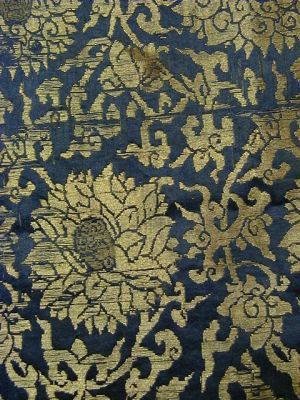I can't help but be struck by the similarities between these brocade fragments

and the designs sported by so many of or pile woven bag faces,
with their repeating motives,lattices, and this defining border which both demarcates the physical dimensions of the pieces and inparts this illusion of infinite repeat.

Given the central importance of the textile industry in Central Asia
and Turkey, remembering the significance attached to these ceremonial robes among the Ottoman and the Central Asian peoples,taking into account their long and extensive use and significance, coupled with the knowledge that there is a corresponding history of use of these same said textiles in fragment form as banners and decor, I don't believe that it is too difficult to conclude that these textiles could have played a significant role, exerted much influence, in the use and development of carpet designs in general and perhaps more specifically the Turkmen gul format.

Even the size of this fragment speaks to a kindered use or history, yet I am sure ergonomics play a role.
Find below an example of a Ming Dynasty brocade from the thread
Ikat, Brocade here on Turkotek.

Ikat, metal brocades, and even the Central Asian Palas are all brocades, if memory serves
Dave
 .
.